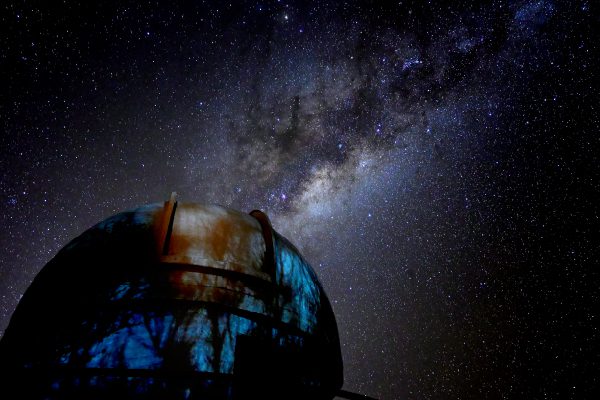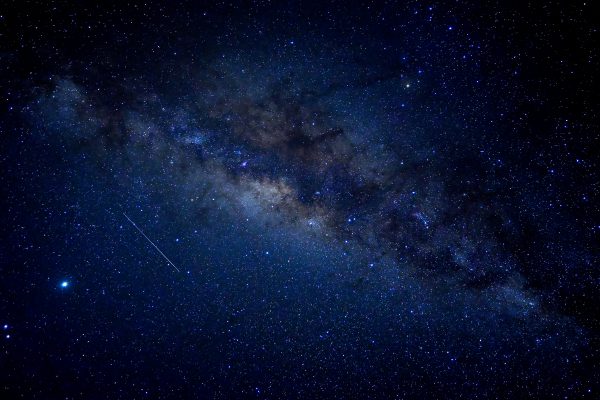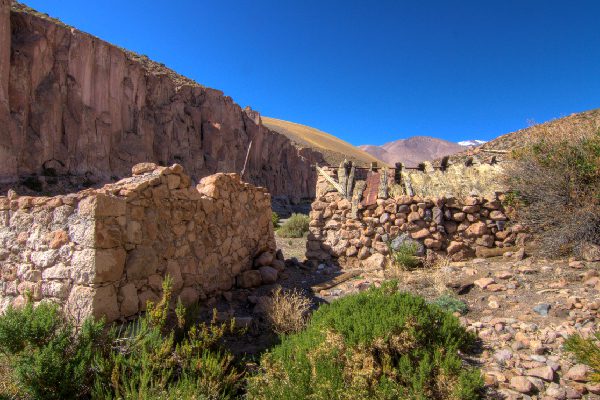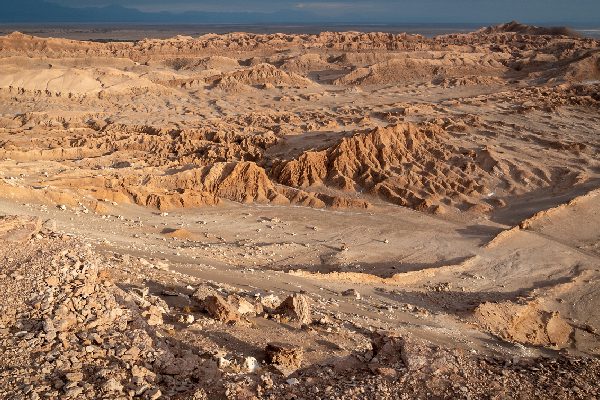San Pedro de Atacama: the rarest of gems set in northern Chile
Located in the driest desert in the world, the town of San Pedro de Atacama and its surroundings offer a captivating experience. From unique geological phenomena to groundbreaking discoveries in the fields of archaeology and astronomy, the desert landscapes of this town are a treasure trove of wonders for any traveler.

San Pedro de Atacama, located in the Antofagasta Region in the north of the Chile is one of most visited destinations along the length of this long thin country. Its valleys, lagoons, mountains, stars and rich biodiversity pique the interest of seasoned scientists and first-time adventure travelers alike. There are dozens of activities on offer, all punctuated by some of the finest gastronomical experiences to be found in South America.
A sky gazer´s paradise
Chile has the potential to become a world leader in scientific and touristic astronomy, especially in the northern area of the country. This is the opinion of Massimo Tarenghi, physicist and astronomer emeritus at the European Southern Observatory (ESO). Tarenghi has overseen the construction and management of world-class telescopes in Chile, such as the Very Large Telescope (VLT), the New Technology Telescope (NTT) and the Atacama Large Millimeter Array (ALMA).

Astronomy has its origins in San Pedro de Atacama long before the installation of the first telescopes in the area nearly 60 years ago. We know that pre-Columbian cultures were avid star gazers, as evidenced by the archaeological sites in the area.
“The Atacama differs from other parts of the world because there is no light pollution,” Tarenghi adds. ¨Nor is there much dust. The sky is particularly beautiful and you can observe it from a very high altitude above sea level. When the weather conditions are good, observation here is the best in the world and it is the perfect place for millimeter and submillimeter astronomy like that offered by ALMA”, the Tarenghi observes.
The ALMA observatory is considered the most powerful radio telescope in the world for observing the cold universe. This includes molecular gas and dust, to traces of radiation from the Big Bang, as described on the observatory’s website.
“Thanks to the ALMA observatory, located at almost 5,000 meters above sea level, it is possible to observe the universe on a molecular level,” Tarenghi explains. “This includes pinpointing the presence of water to other fundamental elements that are essential for life. We are on the verge of discovering life on other planets thanks to these powerful and modern telescopes in Chile.”
In parallel to this research and discoveries, promoting astrotourism is essential for astronomers. This not only helps fund their endeavors, but brings astronomical awareness and education down to Earth for a broader audience.

A dazzling past
The archaeological history surrounding the town of San Pedro de Atacama dates back some 10,000 years to a period when various nomadic groups settled around the salt flats that we call the Salar de Atacama today. These people come to be known as the Atacameños.
“By 900 BC, there were villages in the ravines in the locality of San Pedro de Atacama, on the banks of the Loa River, and in the oases near the Salar de Atacama,” the book Atacameño: historical introduction series and stories of the native peoples of Chile tells us. “These people began to develop agricultural practices and between the 100 and 500 AD, there was an economic boom accompanied by a population increase in the area around where the town San Pedro de Atacama currently stands.”
The Atacameños were a pre-Hispanic ethnic group, with strong cultural affinities and influences from the Inca and the Tiwanaku. Between the years 400 and 700 AD, the Atacameños had also been known as the San Pedro People.
“These were a people known for their fine and intricate craftsmanship of objects such as axes and goblets of embossed gold as well as loom-spun blankets,” the Atacameño: historical introduction series and stories of the native peoples of Chile book relates. “Their pottery was monochrome (of a single color) and finely polished.”
Due to the arid and dry climate, the archaeological remains recovered in the Atacama region of Chile have been preserved in an exceptional state, making this the ideal classroom for learning how pre-history peoples lived in this part of the world.
Remains from the more recent and widespread Incan culture, including evidence from offerings made on mountain peaks as well as architecture, ceramics and cemeteries have also been found.
“Archetypal Incan architecture is exemplified by the Tambo de Catarpe and contemporary Pukara de Quitor sites,” Bente Bittmann and Gustavo Le Paige write in their book Atacameño Culture. “Both are located a short distance to the north of San Pedro de Atacama. Three large loading bay patios were constructed throughout these sites, each surrounded by houses and other infrastructure. From here the goods would be driven up into the highlands. The Incan servants and officials who worked here were buried in a nearby cemetery, alongside ceramics made by the Atacameño artisans who lived amongst them.”
Further historical revelations can be found at the archaeological sites of the Pucará de Quitor and Pucará de Lasana fortresses, dating back to the 12th century. The archaeological site Aldea de Tulor is a village of some 3,000 years of antiquity and is considered the oldest archaeological site in the Chilean north.

An incredible geological heritage
The colors, reliefs and shapes that characterize San Pedro de Atacama are testimony to the geological history of the area that date back more than 400 million years ago to the formation of the Cordón de Lila in the south of the Salar de Atacama. This is one of the oldest geological formations in Chile.
There is no other place on the planet like the Salar de Atacama basin, argues the Atacameño geologist Paula Ramos. It is located in the driest desert in the world, in a tectonically active zone, situated on one a plate that is colliding with the Nazca Plate. Ramos is also the director of the Geockoi Guide and Park Ranger School.
“From this type of geology, you´d expect to find a landscape where a large part of the mountains in the area are volcanoes,” Ramos explains. “You come with this idea that volcanoes are perfect cones. That´s just not the case here.”
In the driest desert in the world, the ancient landscapes of the salt flat basin are very special indeed. You are surrounded by mountain ranges with ancient geological history with rocks of varying eras and composition.
“The Cordón de Lila formed beneath the ocean some 400 million years ago,” Ramos adds. “Over the passage of time, a whole set of mountain ranges rose up, which today we have come to call the Andes. The Domeyko mountain range is part of this. Formed by earthquakes, but witnessing no volcanic eruptions, the magma remained hidden from sight in underground chambers, transformed today into mineralized rock.” These so-called plutonic rocks, give rise to the presence of copper in the Atacama.
The Cordillera de la Sal is another unique geological phenomenon, formed over a relatively short period of geological time when minerals such as salt and gypsum are dissolved. This leads to the formation of caves and caverns known as karstic landscapes.
“There are many specific geological phenomena that occur only on this part of our planet,” Ramos continues. “I highly recommend going to the Valle del Arcoiris, (Rainbow Valley). It is a true open-air geological laboratory where all the Domeyko rock types can be found. The Valle de la Luna (Moon Valley) is also unmissable. Here you can bear witness to the majesty of the Cordillera de la Sal. Finally, you should travel a little on the trail of the Atacama´s monks, taking you on a journey of discovery through the desert´s craters.”

